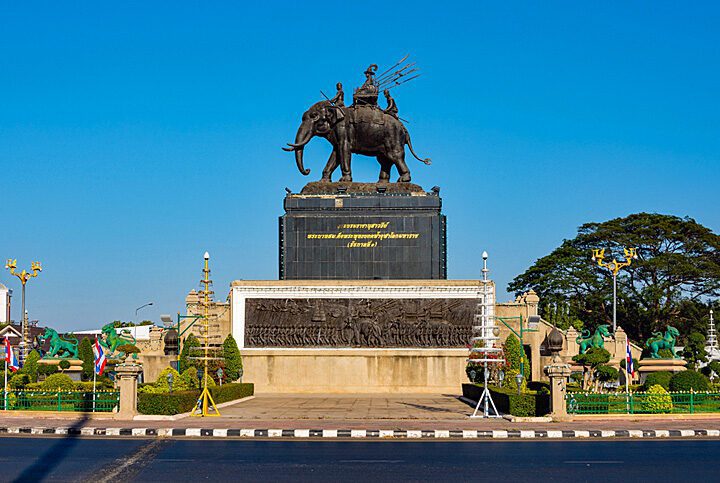Calendar: April 6 Chakri day in Thailand

The Royal Images of Chakri Dynasty Kings of Thailand on display at the Thai Human Imagery Museum (DMstudio House / Shutterstock.com)
The establishment of the Chakri dynasty is commemorated on April 6 Maha Vajiralongkorn Bodindradebayavarangkun ie Rama X, the tenth and current king of Thailand.
The Chakri dynasty was founded by Phra Buddha Yodfa Chulaloke or Rama I, who was born Thong Duang on March 20, 1737 and ascended to the throne on April 6, 1782. He ruled the country for 28 years and during his reign he consolidated the kingdom in such a way that there was no further fear of new wars or invasion by a foreign power.
King Rama I has been hailed as an accomplished statesman, a maker of new laws, a poet and a devout Buddhist. During his reign, a "reconstruction" of the Thai state and culture was carried out, so to speak. He was the monarch who established Bangkok, City of Angels, as the new capital of Thailand pointed. King Rama I died on September 07, 1809 at the age of 72 years.
King Rama I was succeeded by his son Phra Buddha Loetla Naphalai or Rama II. This king was gifted with an artistic talent and it was therefore not surprising that during his reign a "renaissance" of Thai art and culture took place, especially in literature.

Phra Buddha Yodfa Chulaloke or Rama I
Phra Nang Klao was the next King Rama III. He fortified the country defensively and commissioned many new buildings. In his reign, Thai art reached a peak since Ayutthaya period. It is said that the reign of King Rama II and III was a Golden Age of Literature and Art, comparable to King Narai in Ayutthaya.
King Rama III or Phra Nang Klao was succeeded by King Mongkut (Rama IV), who showed himself to be an ambitious, but also very religious leader. He started the commercial contacts with foreign countries and was responsible for the introduction of western science and modernization in Thailand.
Then came King Chulalongkorn, the sympathetic monarch, who introduced many changes and reforms in Thailand during his reign of 42 years. For example, slavery was abolished, a modern system of administration was introduced, competent courts were established and education was systematically spread across the country
King Vajiravudh, who succeeded King Chulalongkorn as Rama VI, further consolidated and developed the good work of his predecessor. He contributed much to the development of the national language and literature, so much so that he was sometimes called the poet who became a king . He also concluded a number of treaties with foreign powers mainly to improve Thailand's prestige. This king also introduced the use of a new Thai flag, the tricolor, replacing the old red flag with the white elephant.
King Vajiravudh passed away on November 26, 1925 and was succeeded by his younger brother King Prachadhipok, the seventh king of Chakri dynasty, who reigned as the last absolute monarch. A revolution took place on June 24, 1932, and His Majesty agreed to the proposal of a constitutional regime. On March 2, 1934, the king abdicated and later died in exile.
He left the throne to his nephew, King Ananda Mahidol, who died suddenly after 11 years of reign, after which his younger brother, King Bhumibol Adulyadej, the previous monarch, became the new king. He is known as King Rama IX or the ninth king of the Chakri dynasty.
Maha Vajiralongkorn Bodindradebayavarangkun or Rama X (Bangkok, July 28, 1952), is the current king of Thailand. He is the son of King Rama IX.
Op Chakri Day commemorates the establishment of the Chakri dynasty in 1782 by King Rama I. On that day, the flag is officially raised and traditional ceremonies take place, such as the laying of flowers and wreaths at the many statues of the kings in the House of Chakri.

